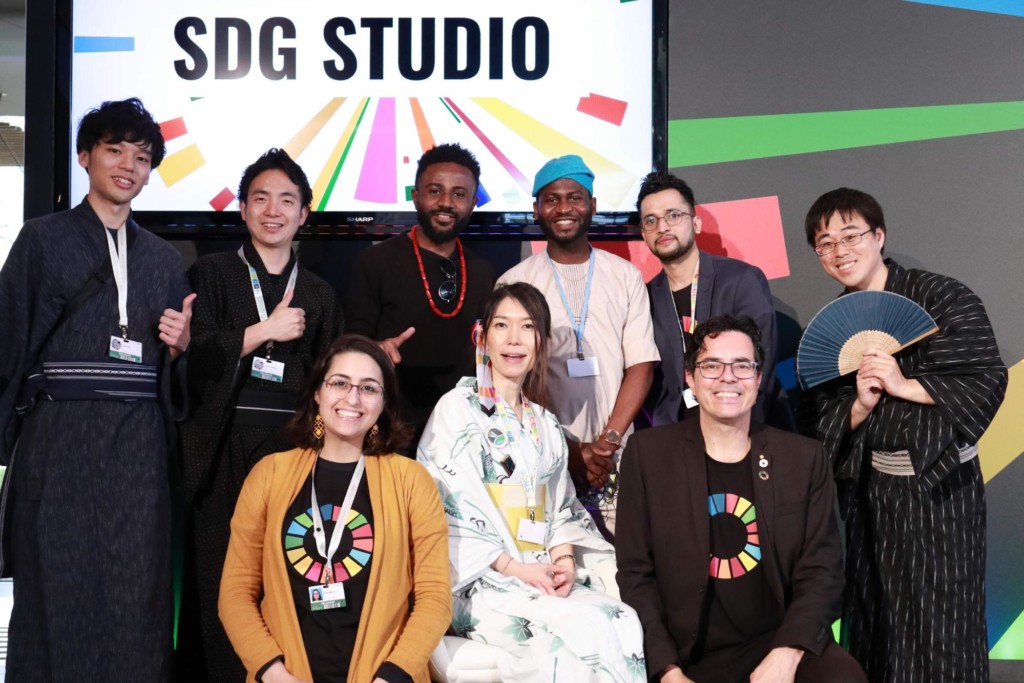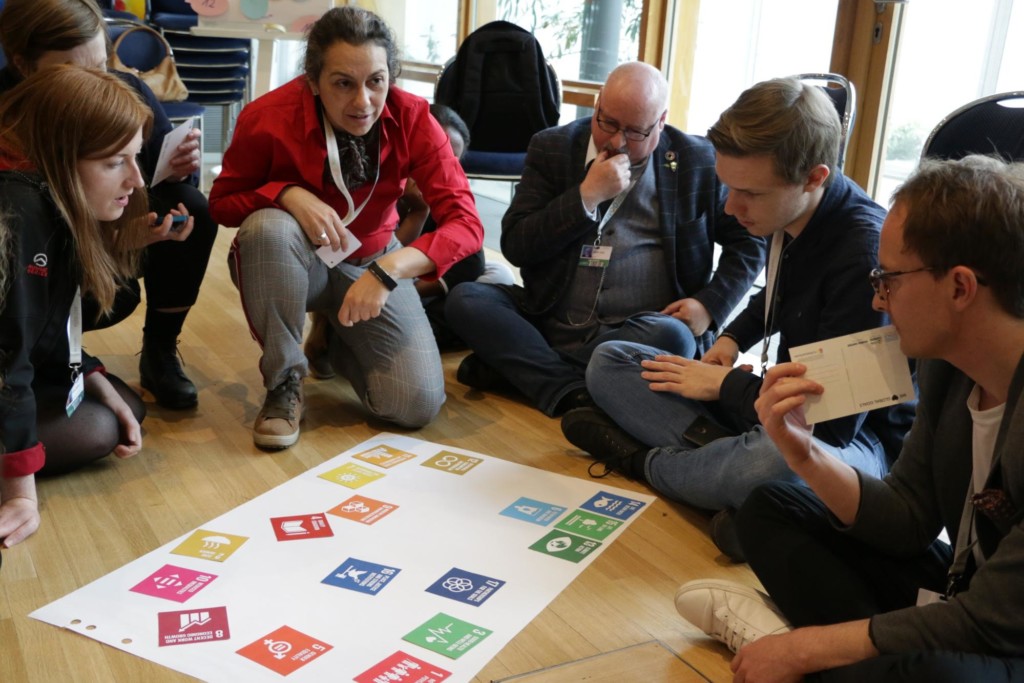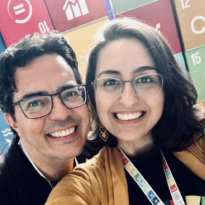Some of the most complex problems in the world are represented by the United Nations Sustainable Development Goals, the SDGs. These 17 goals and 169 targets aim to transform the planet until 2030. They are global, interconnected and multidimensional: we define them as multi-complexes. As Design Thinking is an important approach to solve complex problems, it is a powerful and innovative tool to mobilise global efforts to end poverty, foster peace and protect the Earth.
UN’s SDGs
A couple of months ago, we travelled from Tokyo to Bonn, German to take part on an amazing experience, from 2-4 May, at the third edition of the largest UN global event for the SDGs, an event called The Global Festival of Action. We felt invigorated by the energy of more than 1,500 creatives, activists, changemakers, youth leaders, business and government experts from 150 countries, who were distributed in dozens of plenary sessions, workshops, interactions, video sessions, and debates.
The event – hosted by the United Nations SDG Action Campaign – stressed the need for citizen engagement, behaviour and political change to drive actions to solve urgent global humanitarian problems. The main goal of the event was testing and accelerating new ideas while deepening the coalition for SDGs action.
Paola and Alesse with representatives from various countries, at the UN’s SDGs event.
Highly inclusive, the SDGs are human-centred to the core: “The ´Leave No-one Behind´ commitment was achieved in large part because people from around the world, from all walks of life came together to demand their leaders prioritise the needs of those most marginalised and disadvantaged”. To us, this means creating innovative solutions to provide well-being for everyone everywhere. The framework has been very well structured to achieve this audacious goal. The best part of the SDGs is the fact that these are real problems, analysed in profound detail by scientists and specialists.
To achieve these goals, a perfect balance between development and sustainability is required. To accomplish that, the prototyping of one global solution is needed; and such prototype must take a lot of variables into consideration, such as zero poverty, zero hunger, good health, quality education, gender equality, clean water and sanitation, affordable clean energy, decent work, economic growth, reduced inequalities, sustainable cities, responsible consumption, climate action, unpolluted oceans and land, and partnerships to achieve these goals.
To arrive at this desired reality by the year 2030, Design Thinking is the most effective approach – with its tools and models – to mobilise individuals, organisations, and networks.
The examination of the UN’s General Assembly document reinforced to us the complexity of the SDGs and the urgent need for innovative solutions; the report states that “Governments, civil society and a wide range of international actors can be mobilised to confront such complex challenges”; and concludes that all these stakeholders are needed “to generate innovative approaches, vital new data, new resources, and new tools and technology for this struggle”.
In action.
During the conference in Bonn, Mexican Congresswoman Gabriela Cuevas Barron stated that “This is the moment when we have a lot of questions, but at the same time, we have a very clear consensus: this development agenda. This is a clear roadmap. A strategy that we must follow”. By large, this momentum is perfect for exploring ways in which Design Thinking can contribute to social change on a global scale.
After such exciting moments in Bonn, we returned to Tokyo determined to explore even more the intersections of Design Thinking and the SDGs. We have been reflecting on the idea that Design Thinking and its practitioners have an incredible opportunity to effectively co-create solutions that will change the destiny of our planet.
Next week, we will share more Bonn’s event, innovation and other initiatives we have been working on since then.
References
https://www.un.org/en/development/desa/publications/files/2015/01/SynthesisReportENG.pdf
https://action4sd.org/leavenoonebehind/
—
If you are interested in learning more about this approach, visit Echos’ Designing Desirable Futures course page.
Follow us on social
Instagram – Facebook – LinkedIn – Youtube
How Can We Help?
- For training and Innovation Journeys in your company: check out our in-house course offering.
- For upcoming courses in your region: visit our website.
- For upcoming events in your region: look at our event calendar.
- If you have a special project and would like to use Echos’ consultancy services: send us an email.
- Want to speak to a real person? Call us on 1300 502 006





